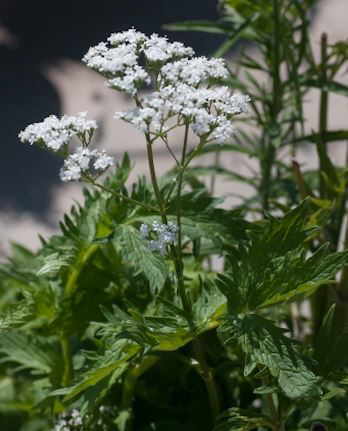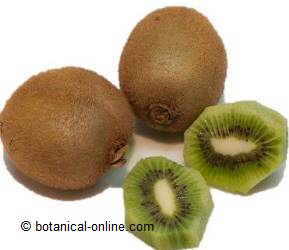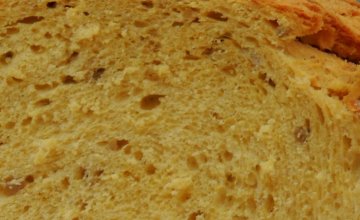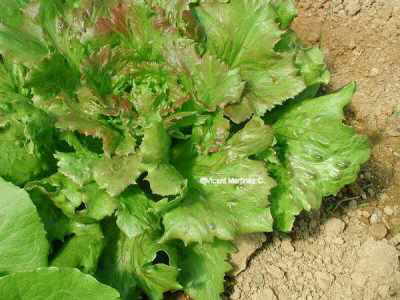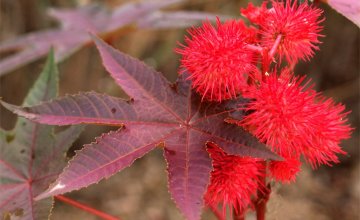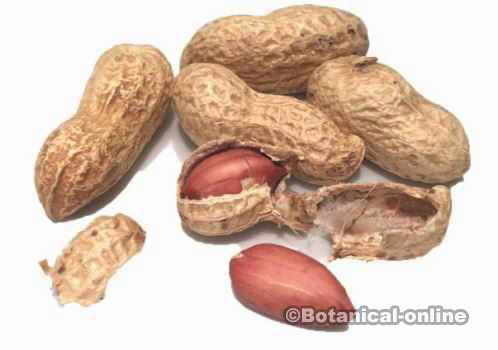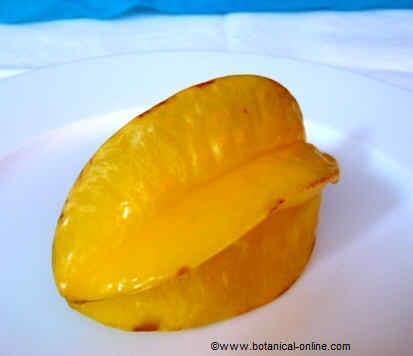Contents
How to grow mangoes
 Flowering and fruiting of mango
Flowering and fruiting of mango
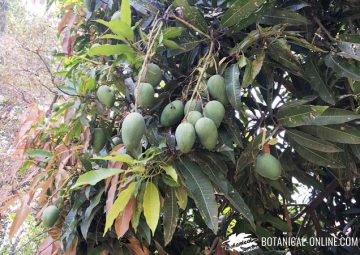
Mango flowers are very small, gathered in large number of greenish-white inflorescences (thousands of flowers per panicle). They open when the sun is out or in the early morning hours. Mangoes can bloom from early to mid spring. There are also early winter blooms that often miss the flower.
For the flower to bear fruit, it needs to be in an dry atmosphere. It has been found that most flowering occurs when the temperature and humidity are low.
Fruiting takes place between three and five months after flowering. It is convenient for maturation to be done on the tree to obtain fruits with the highest quality. In cold places, cultivation should be conducted in a greenhouse.
Fruits aimed to be sent abroad are collected when they are unripe. They should mature to a temperature above 10 ° C. To achieve maturity, they should be better put with the petiole down and covered with a piece of bag, so as they not to become wrinkled. If the ripening is performed in the greenhouse, it is achieved faster.
Pollination is done by insects, primarily by flies between different flowers but there are varieties that can self-pollinate.
Uses and garden varieties of mangoes
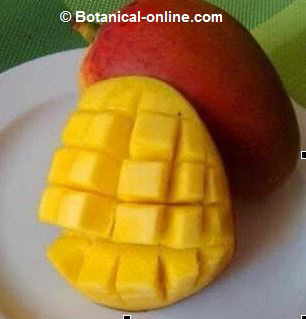
Foto de mango
Mangoes are usually planted for their fruits in orchards. The species Mangifera indica is best for this purpose. Although the tree is very big and powerful, it can be planted in gardens with plenty of lateral space because its roots are not very aggressive. Anyway, we can always prune it to control its growth. Mangoes provide a very dense shade.
If we want to plant more ornamental mangoes, we can always resort to Mangifera caesisa a mango species with a fissured grayish brown trunk, which is more decorative. Its fruits are elliptical. This tree requires a tropical climate or a greenhouse.
East Indian mango species can be grown in large containers. It is desirable to locate them on a platform with wheels that can be brought inside if possible frost.
Other species of mangoes:
- Mangifera foetida
- Mangifera kemanga
- Mangifera odorata

Watering mangoes
Do not water while the soil holds moisture enough. In very dry or very permeable soils, they should be watered every fortnight once fruiting has started. Once the fruit has been collected, do not water them and let them rest for a couple of months.
During flowering, watering should be reduced because high humidity favors the growth of the tree but reduces flower production.
![]()
Location and exposure of mangoes
It is important to provide them a place in the sun and fresh air. Only when planted in desert climates, they need something for protection against full sun. In other places it is better to place them facing the South.
If planted in greenhouses, they should have to be careful provided with a good ventilation. The lack of this will lead to the occurrence of many diseases.
In windy sites they need adequate protection. When young, they also need protection for the cold to prevent freeze. (they do not stand temperatures below – 4 ° C and, when reaching 4 ° C, they will loose their flowers and the young fruits will become spoiled..
They can tolerate high temperatures very well provided they can dispose of water. They can withstand temperatures above 50 ° C. The fruit needs heat to grow well and does not support mist in summer.
Reproduction, grafting and pruning of mangoes
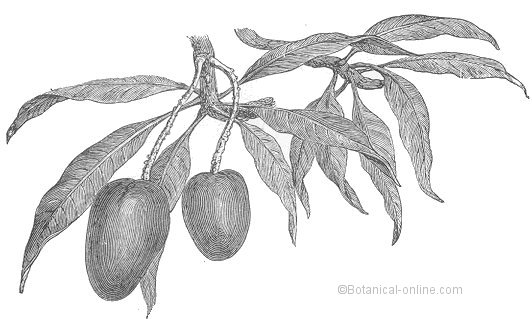
Botanical illustration of the plant
Mangoes can be reproduced from seed from summer to autumn. The seed should be removed from the shell and planted on the ground with the most protruding part upwards.
Sometimes germination does not occur because the mangos sold in the supermarket have been treated to make them sterile or because the process has damaged the seed conservation.
It is also known that the germination capacity of mango seed can disappear after 8 days of picking up the fruit. Anyway, you can test by planting several seeds from different fruits purchased at different locations. To be fertile, germination takes 15 or 30 days.
The best seeds are those that contain several embryos. They will produce several seedlings to be transplanted when they reach 10 cm in height. After about four months, they will have to be transplanted to their final place. During this period the plants needs constant moisture.
This type of planting is ideal when you want to plant mangoes in an orchard or garden to produce big trees because they are much more powerful and successful than those obtained from a single embryo seeds.
Grafting can be done from winter to early spring, using the technique of plating. In places with high rainfall, they should be protected to prevent the onset of disease
Pruning is practically limited to the first three years. You should also remove the side branches to encourage the formation of a single trunk or to clarify interior branches for ventilation and allow for greater ease in collecting the fruit.
Once adult, if desired, pruning may be performed to control the growth in late winter. This pruning also helps to produce new young branches. The rest of pruning can be done to eliminate unsafe materials.
Type of soil and fertilizer for mango
Mangos are suitable for any type of soil provided it has good drainage. they should have a pH between 5.5 and 7.5.
Although they tolerate all soil types, if you want to produce much fruit, you’d better provide a fertilizer with nitrogen which is what helps the tree to bloom properly. Oxide of potassium and phosphorus are also very convenient.
![]() More information on mango.
More information on mango.


